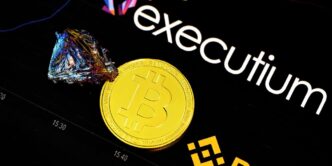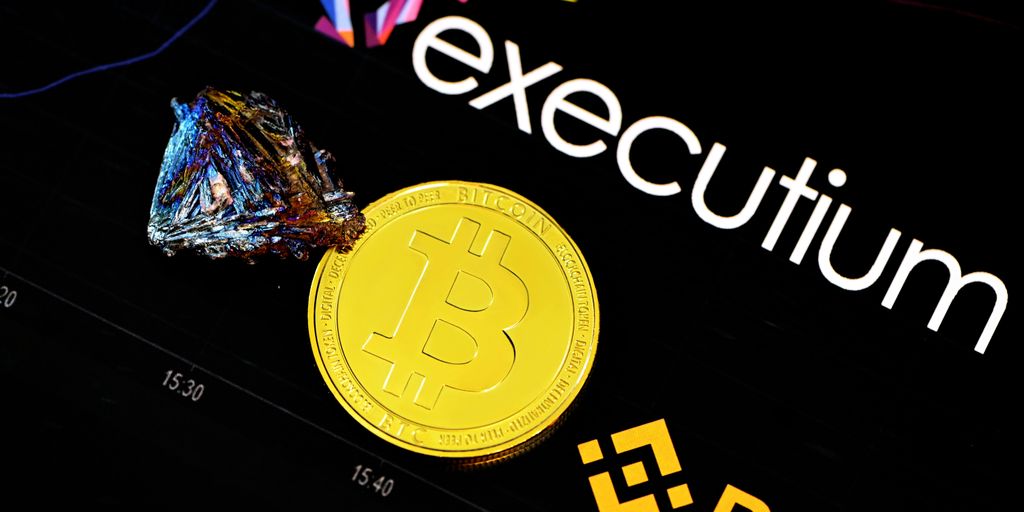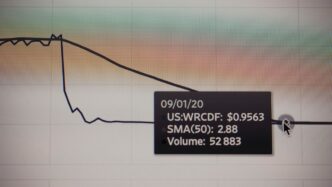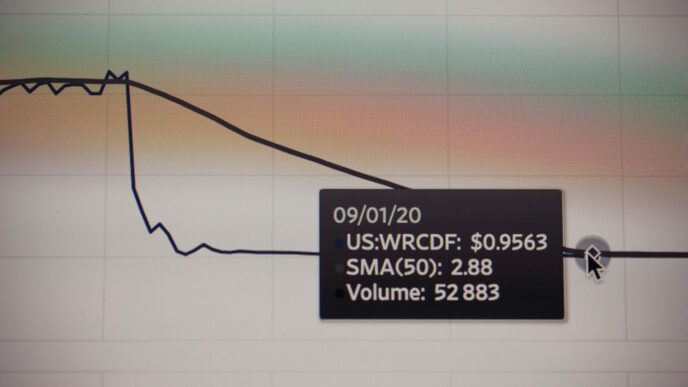Thinking about Casper crypto? It’s a blockchain platform that’s been making some waves, especially for businesses and developers. Unlike some other crypto projects that can feel a bit complicated, Casper aims to be more straightforward. It’s built to handle smart contracts and decentralized apps, but with some unique features that set it apart. We’ll break down what makes Casper tick, from its special consensus method to how its own token, CSPR, works within the network. If you’re curious about what the future of blockchain might look like, especially for real-world use, stick around.
Key Takeaways
- Casper uses a consensus mechanism called Highway, which is based on Correct-by-Construction (CBC) Casper, designed for better safety and adaptability in transaction processing.
- The CSPR token is the native currency of the Casper network, used for paying transaction fees and staking to help secure the network and earn rewards.
- Casper started with 10 billion CSPR tokens, with allocations for the team, advisors, the Casper Association, and development incentives, plus tokens sold to the public.
- The network has a target inflation rate of around 8% to encourage network use, with no fixed maximum supply for CSPR.
- Casper is designed to be developer-friendly, supporting WebAssembly and Rust, and offers predictable network fees, making it attractive for businesses and app builders.
Understanding Casper Crypto’s Core Technology
Casper is a smart contract platform that’s built to be user-friendly for developers and businesses. It runs on a Proof of Stake (PoS) blockchain, which is a more energy-efficient way to secure a network compared to older Proof of Work systems. Think of it like this: instead of using a lot of computing power to solve puzzles, validators put up a stake of the network’s native token, CSPR, to get the chance to validate transactions. If they act honestly, they get rewarded. If they try to cheat, their staked tokens can be taken away, which is called slashing. This whole process is how the network agrees on what transactions are valid and keeps everything running smoothly. Casper Labs, the company behind it, was co-founded by Mrinal Manohar and Medha Parlikar, bringing experience from private equity and software management to the project.
The Highway Consensus Mechanism
Casper uses a unique consensus protocol called Highway. This is a bit different from the usual methods you see on other blockchains. Highway is built on research into something called Correct-by-Construction (CBC) Casper. The main idea behind Highway is to make the process of agreeing on transactions faster and more reliable. It allows for a higher threshold for when a block is considered final, meaning the network can reach an agreement more quickly. This is a big deal for performance. Unlike some older systems that have strict rules about how agreement must happen, Highway offers more flexibility in how block finalization is expressed, which is pretty neat.
Correct-by-Construction Casper Explained
Correct-by-Construction (CBC) Casper is the foundation for Casper’s Highway consensus. It’s a method for blockchain networks to agree on the order of transactions. The concept was developed over time by various researchers, with Vlad Zamfir being a key figure. Vitalik Buterin and Virgil Griffith also published a paper on a related system called "Casper the Friendly Finality Gadget." The core idea is to build a system that is inherently correct by its construction, meaning the rules are set up to prevent errors from the start. This approach includes things like slashing conditions, which are penalties for validators who misbehave, and ways to figure out what happens if the chain splits. While Ethereum uses a related model called Gasper, Casper’s network specifically uses its own distinct CBC-Casper mechanism, which was detailed in a paper by developers from Casper Labs and UC San Diego.
Decentralization Through Validators
Decentralization is a big part of what makes blockchain technology strong, and Casper achieves this through its network of validators. These validators are the ones who stake CSPR tokens to help secure the network and process transactions. By requiring validators to have a stake in the network, it encourages them to act in the network’s best interest. The more validators there are, and the more distributed they are geographically and in terms of who operates them, the more decentralized and resilient the network becomes. This setup means no single entity has too much control, which is a key principle of blockchain. You can learn more about how Casper works on their official website.
The Role and Utility of the CSPR Token
So, what exactly does the CSPR token do on the Casper network? Think of it as the lifeblood of the whole operation, much like Ether (ETH) is for Ethereum. It’s not just some digital collectible; it has real jobs to do.
CSPR as the Network’s Native Currency
At its most basic, CSPR is what you use to get things done on the Casper blockchain. Every time a transaction happens, or a smart contract runs, a small amount of CSPR is needed to pay for the network resources used. This is often called a ‘gas fee’. These fees are what keep the network running smoothly and prevent it from being overloaded with junk transactions. It’s the standard way to pay for services on the network, making it the native currency for all activities.
Staking and Network Security
Casper uses a Proof-of-Stake (PoS) consensus mechanism, and CSPR tokens are central to this. People who hold CSPR can ‘stake’ their tokens, essentially locking them up to help validate transactions and secure the network. By doing this, they become validators or can delegate their stake to existing validators. In return for their contribution to network security, stakers receive rewards, also paid in CSPR. This creates a strong incentive for people to hold and stake CSPR, which in turn makes the network more robust and secure. It’s a pretty neat system that aligns the interests of token holders with the health of the network. You can find more details about how this works on the Casper network.
Transaction Fees and Network Incentives
Beyond just paying for individual transactions, CSPR plays a role in the broader economic incentives of the network. The fees collected from transactions are distributed to the validators who are actively securing the network. This system ensures that those who contribute resources and effort to maintain the blockchain are rewarded. Additionally, there’s a planned inflation rate for CSPR, which means new tokens are issued over time. This ongoing issuance is also designed to incentivize participation and further secure the network, ensuring it can grow and adapt over time.
Casper Network’s Tokenomics and Distribution
When we talk about Casper, understanding its tokenomics and how the CSPR tokens are distributed is pretty important. It’s not just about the tech; it’s also about how the network is funded and how people are incentivized to keep it running smoothly. Think of it like the engine and fuel for a car – you need to know how much is available and how it’s used.
Initial CSPR Token Supply
When Casper first launched, there was a set amount of CSPR tokens created. This initial supply is the foundation upon which the network’s economy is built. It’s important to know this starting point to understand how future issuance might affect the overall supply. The initial distribution aimed to support various aspects of the network’s growth and development.
Inflation and Future Issuance
Like many blockchain networks, Casper has a plan for future token issuance, which is often referred to as inflation. This isn’t necessarily a bad thing; it’s usually designed to reward those who actively participate in securing the network, like validators. The rate of this issuance is a key factor in the long-term economic model of the network. It’s a balancing act – providing enough incentive without devaluing the token too much.
Token Allocation Breakdown
How were those initial tokens actually handed out? The allocation typically covers several areas:
- Team and Advisors: A portion is usually set aside for the core team and advisors who built the project.
- Ecosystem Growth and Development: Funds are often allocated to encourage developers, partnerships, and marketing efforts.
- Staking Rewards and Incentives: A significant amount is usually reserved to reward validators and delegators who help secure the network.
- Public and Private Sales: Tokens are also sold to investors to raise capital for further development.
Understanding this breakdown gives you a clearer picture of who holds the tokens and the intended use of those holdings. It helps in assessing the decentralization of token ownership and the network’s long-term sustainability. You can find more details about the specific allocation percentages on the official Casper website, which is a good place to start if you want to get into the nitty-gritty of the Casper (CSPR) token.
Key Differentiators of the Casper Network
Casper isn’t just another blockchain; it’s built with some pretty smart ideas to make things easier for both developers and businesses. Think of it like this: while other blockchains might be a bit clunky or hard to update, Casper tries to be more like the tech you’re already used to, but with the added power of decentralization.
Developer-Friendly Features
One of the biggest headaches for developers on many blockchains is the programming language. Casper sidesteps this by supporting WebAssembly. This means developers don’t have to learn a whole new, specialized language like Solidity. They can use tools and languages they’re already familiar with, which really speeds things up. Plus, Casper has this neat account permission model that helps with things like key recovery and sharing data between accounts without needing complex encryption. It just makes building stuff simpler.
Predictable Network Fees
Nobody likes surprise costs, especially when running a business. Casper tackles this by aiming for predictable network fees. Instead of gas prices that can swing wildly based on network demand, Casper wants to offer more stable and transparent pricing. This helps businesses plan their budgets better and makes it easier to figure out the cost of running applications on the network. It’s a small thing, but it makes a big difference for real-world use.
Upgradable Smart Contracts
This is a really big deal. On many blockchains, once you deploy a smart contract, it’s pretty much set in stone. If you find a bug or want to add a new feature, you often have to start all over again, which is a massive pain. Casper lets you upgrade smart contracts directly on the chain. This means you can fix issues or improve your application over time without needing to go through a whole disruptive migration process. It makes applications more flexible and long-lasting, which is great for any project that plans to stick around. It’s a proof of concept that blockchain can be adaptable. You can find out more about how Casper works on their official site.
Casper Crypto’s Growing Ecosystem and Adoption
Casper’s ecosystem is really starting to take shape, and it’s pretty exciting to see. It feels like a lot of different groups are getting involved, from big companies to individual developers. The network was built with real-world business needs in mind, which seems to be a big draw. It’s not just about crypto enthusiasts anymore; actual businesses are looking at how they can use this technology.
Enterprise Applications and Use Cases
Casper is making a name for itself in the enterprise space. Companies are looking for blockchain solutions that are secure, scalable, and, importantly, easy to integrate without needing a whole team of blockchain experts. Casper’s design seems to hit those marks. We’re seeing interest in areas like supply chain management, where tracking goods transparently is a big deal, and also in financial services for more efficient transactions. The platform’s ability to handle complex business logic and its focus on upgradability means it can adapt as businesses evolve, which is a major plus compared to some older systems. It’s a platform that’s built to grow with companies, not hold them back. This adaptability is a key reason why businesses are exploring what Casper has to offer for their critical processes. You can find out more about what CSPR is and its role within the network.
Developer Community Growth
It’s not just the big businesses that are signing up. The developer community is also growing, which is always a good sign for any blockchain project. Casper supports common programming languages like Rust and WebAssembly, making it easier for developers who aren’t necessarily blockchain natives to start building. This lower barrier to entry means more people can experiment and create new applications. The network provides resources and support, which helps new developers get up to speed quickly. A strong developer community is what really brings a blockchain platform to life, creating new use cases and driving innovation.
Network Activity and Statistics
Looking at the actual usage of the network gives you a clearer picture of its adoption. While specific numbers can fluctuate, the general trend shows increasing activity. This includes more transactions being processed and a growing number of active validators securing the network. The network’s performance, especially its predictable transaction fees and high throughput, contributes to this steady growth. As more applications are deployed and more users interact with them, the network activity naturally increases, demonstrating the platform’s capability and adoption.
Getting Involved with Casper Crypto
So, you’ve been reading up on Casper Crypto and the CSPR token, and now you’re thinking, "How do I actually get involved?" It’s a fair question, and thankfully, Casper makes it pretty straightforward for folks to jump in, whether you’re looking to invest, build something cool, or just be part of the conversation.
Investing in CSPR Tokens
First off, the CSPR token is the lifeblood of the Casper Network. You can grab CSPR on various crypto exchanges, just like you might buy Bitcoin or Ethereum. Once you have some CSPR, you can do more than just hold it. Staking your CSPR is a big deal because it helps keep the network secure and running smoothly. When you stake, you’re essentially lending your tokens to a validator who then uses them to confirm transactions. In return for this service, you earn rewards, which is a nice little bonus. It’s a way to actively participate in the network’s health while potentially growing your holdings. You can find more details on how delegation works on the Casper Network’s official documentation.
Building Decentralized Applications
If you’re a developer, Casper is designed to be pretty friendly. You don’t need to learn a whole new programming language from scratch. Casper supports common languages like Rust and WebAssembly, making it easier to build decentralized applications (dApps) and smart contracts. The platform is also built with future needs in mind, meaning its smart contracts can be upgraded. This flexibility is a big plus for developers who want their creations to stay relevant as technology evolves. Think about creating a new kind of decentralized finance tool or a game – Casper provides the tools to get that done.
Joining the Casper Community
Beyond investing and building, there’s the community aspect. Casper has a pretty active group of people involved, from developers to enthusiasts. You can connect with them through online forums, social media, or even by participating in developer events and hackathons. It’s a good way to stay updated on what’s happening, share ideas, and learn from others. Being part of the community means you can contribute to discussions about the network’s future and get a feel for the overall vibe. It’s not just about the tech; it’s about the people building and using it.
Wrapping Up Casper
So, we’ve looked at what makes Casper tick, from its unique Highway consensus to how the CSPR token fits into everything. It seems like a platform built with the future in mind, aiming to make blockchain tech easier for businesses and developers alike. With its focus on things like upgradable contracts and predictable fees, Casper is trying to smooth out some of the bumps that have held back wider adoption. It’s definitely one to keep an eye on as the blockchain space keeps changing. Whether you’re thinking about investing or building something new, Casper offers a pretty interesting mix of features.
Frequently Asked Questions
What is the CSPR token used for on the Casper network?
Think of CSPR as the main money for the Casper network. You use it to pay for actions on the network, like sending transactions. It’s also used to help keep the network safe and running smoothly through a process called staking. People who help secure the network by staking their CSPR can earn more CSPR as a reward.
How does Casper’s Highway consensus mechanism work?
Casper uses a special way to agree on things called the Highway consensus mechanism, which is built on something called Correct-by-Construction Casper (CBC-Casper). This helps make sure everyone on the network agrees on what’s happening, makes transactions faster, and allows the network to change and adapt as needed.
What makes Casper ‘developer-friendly’?
Casper is designed to be easy for developers to use. It supports common programming languages and makes it simpler to build and update applications. This means businesses don’t need super specialized skills to start using blockchain technology.
Why are predictable network fees important for Casper?
Casper aims to have fees that don’t change much, making them predictable. This is good for businesses because they know exactly how much it will cost to use the network, unlike some other blockchains where fees can jump up unexpectedly.
What does it mean that Casper has upgradable smart contracts?
Casper allows smart contracts, which are like self-executing agreements, to be updated. This is important because it means applications built on Casper can be improved and changed over time to keep up with new technology or business needs, without having to start all over.
How can I get or buy CSPR tokens?
You can get CSPR by buying it on cryptocurrency exchanges where it’s traded. You can also earn it by staking your existing CSPR to help secure the network. Sometimes, there are also chances to get CSPR through special events or sales.














